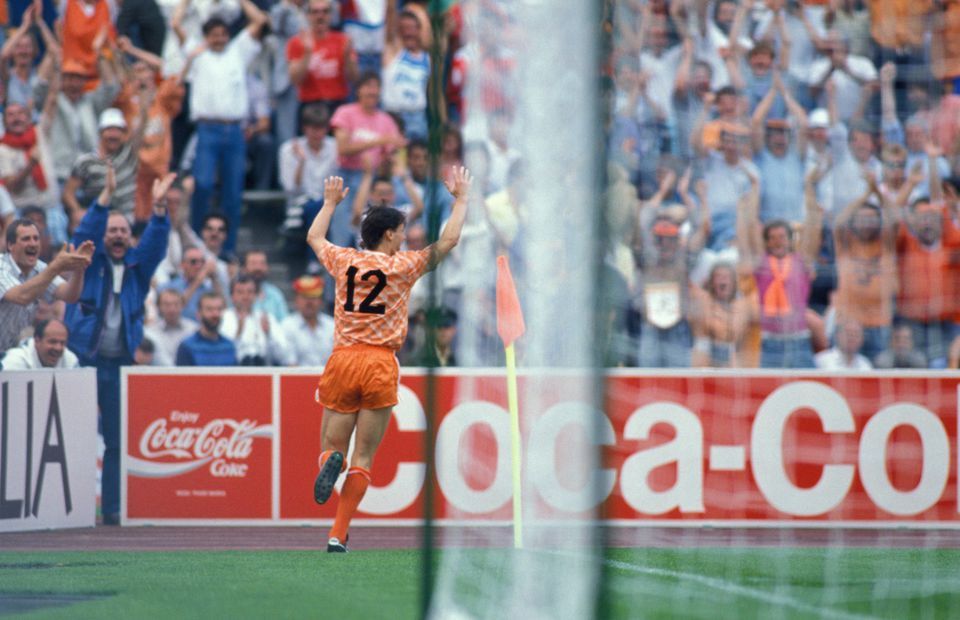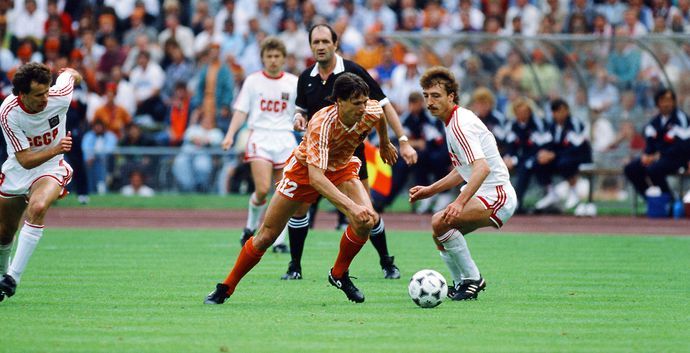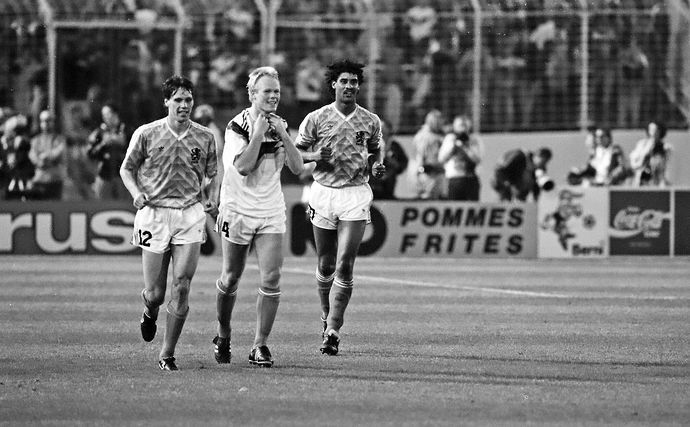Marco van Basten arrived at the 1988 European Championships in West Germany as one of Europe’s most promising young talents and left it as a member of football’s hall of fame.
Much is talked about that volley in 1988 and rightly so, it is one of the most iconic goals of all time and it came on Europe’s biggest stage, but there was much more to the Dutchman’s tournament than a single goal.
The Netherlands were playing in their first European Championship since 1980. They had failed to qualify in 1984, losing out on goals-scored to Spain, who needed to defeat Malta by 11 goals or more in the final game and won 12-1. There was no such heartbreak in the 1988 qualifying campaign as the Oranje cruised unbeaten to the top of Group 5.
Van Basten was included in the squad but was not expected to play a key role, following a frustrating debut season at AC Milan. An ankle injury restricted him to just 11 starts and three goals in the 1987/88 Serie A campaign as the Rossoneri claimed their first league title since 1979.
Prior to his move to Italy, he had scored close to a goal a game in his 174 appearances for Ajax.
With the ankle problem interrupting his preparations, Van Basten was on the bench for the opening game against the Soviet Union.
Coach Rinus Michels opted to start with John Bosman whose only competitive international goals had come against Cyprus. However, Bosman did score in the Netherlands’ two warm-up games against England and Romania and few questioned his inclusion.
The game against USSR ended in a 1-0 defeat, prompting Michels to call on Van Basten for the second group stage game. Opponents England were reeling from a shock defeat to the Republic of Ireland and the 23-year-old took full advantage.
It was an exhilarating game and the Three Lions had already hit the post twice by the time the Milan striker opened the scoring, deftly controlling a Gullit cross before performing a Cruyff-like turn and guiding the ball past Peter Shilton.
Bryan Robson’s surging run and one-two with Gary Lineker restored parity after the break before Gullit again provided the assist for Van Basten’s second, a precision shot from the left into the right-hand corner of the goal. A close-range right-footed finish after a flick-on from a corner completed his hat-trick and sent England packing.
It was a stunning performance from a player who in his own words “was not in good shape” and it set up a semi-final rematch with host nation West Germany, the team who had beaten the Dutch in the 1974 World Cup final. Rinus Michels had led the side in 1974 and was now back at the helm with a chance to avenge defeat.
Revenge was also on the mind of goalkeeper Hans van Breukelen, who watched the game as a 17-year-old: “It was one of my motivations not to lose again. I think the whole team had that feeling. We have to beat them this time."
The game in Hamburg was framed as a battle between Van Basten and defender Jürgen Kohler but it was much more than that. There were mini battles all over the pitch as both sides struggled to create any chances in the first half.
Fittingly, the first two goals came from penalties, the first for Lothar Matthäus after 55 minutes and the second from Ronald Koeman in the 74th minute to level the score.
As the game creeped towards extra time, Van Basten finally got his chance as Jan Wouters found a pocket of space and steered a through ball towards him. With Kohler’s shadow looming, Van Basten stretched to hit the ball first time, sending it past the outstretched fingertips of keeper Eike Immel and into the far corner.
The Netherlands’ tournament ended as it began, with a game against the Soviet Union but with one crucial difference: rather than warming the bench, Van Basten was now the first name on the team sheet. The Dutch took the lead in the 32nd minute when Van Basten sent Erwin Koeman’s cross back across the goal for Gullit to head home. All that was left was for the star of the tournament to have the final say.
When Arnold Mühren, playing his last international match, sent a high cross from the left looping across the box, no one expected what happened next. Van Basten was close to edge of the penalty area and about five metres from the goal line with three defenders between him and the target. He admitted to thinking: “OK, I can stop the ball and do things with all these defensive players or I could do it the easier way.”
The easier way was to volley the ball first time into the back of the net.
As the ball cleared Soviet Union keeper Rinat Dasayev and dipped into the net, a gobsmacked Rinus Michels rose from the bench and put his hand to his head in disbelief, a gesture that mirrored the reaction of those present and millions more watching around the globe.
The Oranje’s wait for a major trophy was over and it had been sealed by a goal from another world.



















